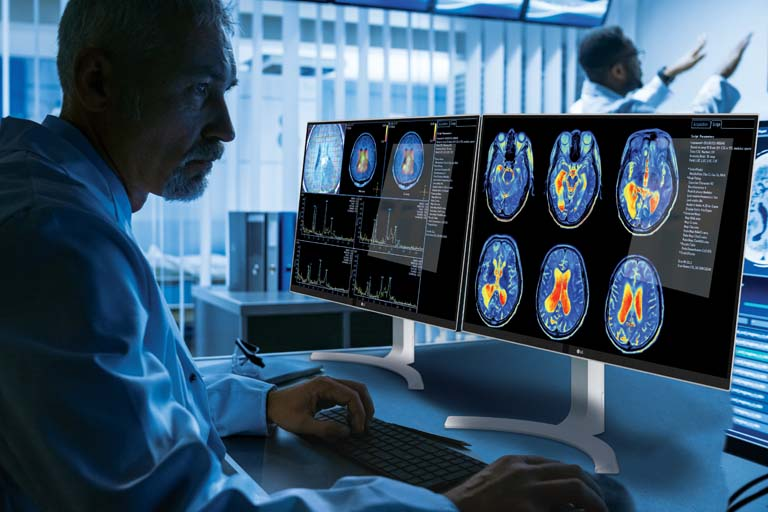

Medical monitors naturally degrade over time – backlights lose brightness, color accuracy shifts, and grayscale performance drifts. These subtle changes can significantly impact diagnostic interpretation of medical images.
Following the AAPM TG270 standard ensures displays maintain optimal performance for accurate diagnoses. This updated guideline provides clear testing protocols for modern flat-panel displays.
Firms such as QUBYX create calibration services that follow medical imaging standards, which allows healthcare centers to ensure their displays are always precise. They have software that helps to save on time and effort while yielding accurate calibration.
What is AAPM TG 270?
The AAPM TG 270 standard modernizes previous TG 18 guidelines by incorporating current display technology advancements. It introduces clearer classifications for different clinical display types, updates test patterns specifically for flat-panel monitors, and establishes more rigorous quality benchmarks.
These revisions ensure medical imaging displays maintain optimal performance for accurate image acquisition and diagnostic review across all healthcare settings.
Why AAPM TG270 Matters
The AAPM (American Association of Physicists in Medicine) Task Group 270 updated previous display guidelines to address modern flat-panel monitors.
It establishes:
- Four display categories (Diagnostic, Modality, Clinical Specialist, EHR)
- Specific test patterns and thresholds for each type
- Quantitative and qualitative evaluation methods
- Frequency recommendations for consistency testing.
Performing Calibration Checks with QUBYX PerfectLum
The easiest way to verify your medical display is using specialized calibration software.
Here is how:
1. Preparation
- Ensure your monitor has warmed up for at least 30 minutes
- Verify proper display connections
- Install QUBYX PerfectLum and connect your measurement device.
2. Running the Tests
- Launch the software and select AAPM TG270 from the QA menu
- Choose your display category (Diagnostic, Modality, etc.)
- Enter workstation details and ambient light conditions
- Follow the guided test sequence.
3. Key Measurements
The software automatically checks:
- Luminance range – Minimum/maximum brightness levels
- DICOM GSDF compliance – Grayscale accuracy
- Uniformity – Consistent brightness across screen
- Color accuracy – For color-capable displays
- Ambient light impact – How room lighting affects visibility.
4. Reviewing Results
- The dashboard shows pass/fail status for each parameter
- Generate PDF reports for compliance documentation
- Recalibrate if any measurements fall outside thresholds.
Testing Frequency Recommendations
AAPM TG270 suggests different schedules based on display type:
Diagnostic Displays
- Full quantitative tests: Annually
- Visual checks: Quarterly.
Clinical Review Displays
- Key measurements: Annually
- Basic visual inspections: Quarterly.
EHR Displays
- Simplified checks: Annually.
Critical Thresholds to Remember
For diagnostic displays:
- Luminance ratio ≥ 350 (250-450 acceptable range)
- Minimum brightness > 1.0 cd/m²
- Maximum brightness > 350 cd/m²
- DICOM GSDF deviation < 10%
- Uniformity variance < 30%.
Making Calibration Part of Your Routine
Regular display verification:
- Catches gradual performance degradation
- Maintains diagnostic confidence
- Simplifies compliance reporting
- Extends monitor lifespan.
Modern calibration solutions like QUBYX PerfectLum have revolutionized medical display testing, transforming what used to require specialized physics knowledge into an efficient clinical routine. A simple 30-minute verification process now safeguards against diagnostic errors that could have lasting consequences.
This technological advancement ensures medical displays maintain peak performance while fitting seamlessly into busy healthcare workflows, giving clinicians confidence in their imaging accuracy without disrupting patient care.




